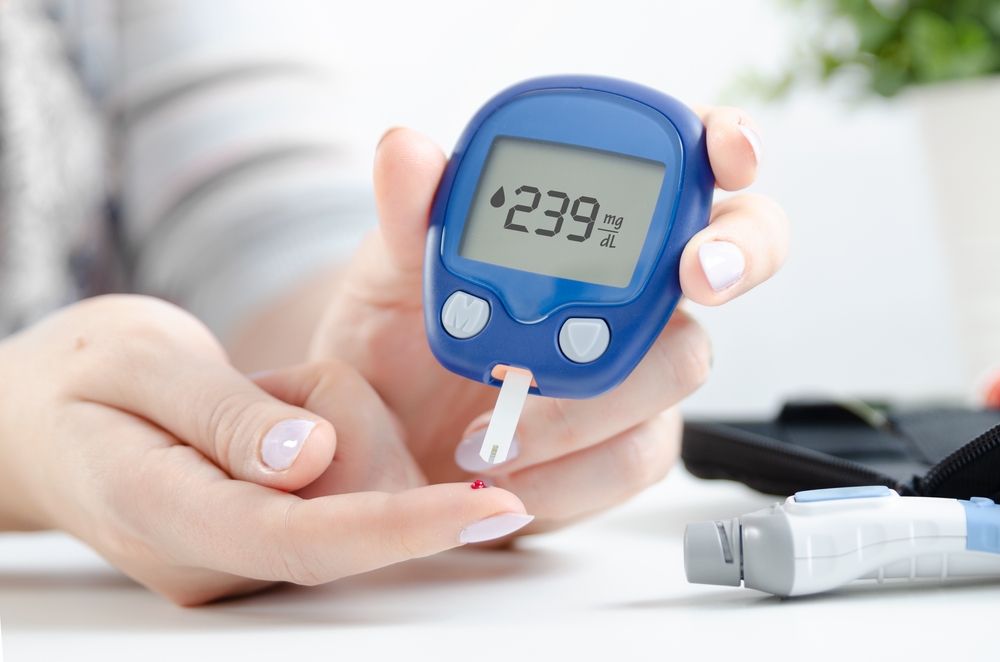In today’s fast-evolving healthcare landscape, diagnostic tools are advancing to meet the increasing demands for speed, accessibility, and accuracy. Two such categories—Over-the-Counter (OTC) and Point-of-Care (POC) diagnostic devices—play critical roles in both clinical and non-clinical settings. At Acenth, a Clinical Research Organization (CRO) located in the heart of the medical technology sector, we recognize how essential it is for healthcare professionals to understand these distinctions to make informed decisions about diagnostic strategies. This article aims to demystify the difference between OTC and POC diagnostic devices, focusing on their utility, regulatory pathways, limitations, and implications for clinical practice.
Understanding Over-the-Counter (OTC) Diagnostic Devices
OTC diagnostic devices are medical tests that can be purchased by consumers without a prescription and used at home or in non-clinical settings. These devices are designed to be simple, user-friendly, and safe enough for individuals without medical training to operate. Common examples include home pregnancy tests, blood glucose meters for diabetes management, and rapid COVID-19 antigen tests.
One of the most defining features of OTC diagnostics is their regulatory classification. These products must meet stringent FDA requirements to ensure they are safe and effective for unsupervised use. This includes validation for ease of use, clear instructions, and minimal risk of user error. Because they are intended for non-professional environments, manufacturers must thoroughly assess and mitigate risks associated with misuse or misinterpretation. While their convenience and accessibility are unmatched, the trade-off often lies in slightly lower sensitivity or specificity when compared to their professional counterparts. Nevertheless, OTC diagnostics play a pivotal role in promoting self-monitoring, early detection, and improved health outcomes by empowering patients to take a more active role in their healthcare.
Defining Point-of-Care (POC) Diagnostic Devices
In contrast, Point-of-Care diagnostic devices are intended for use in clinical or semi-clinical environments such as hospitals, outpatient clinics, emergency rooms, or even ambulances. These devices allow healthcare professionals to obtain real-time diagnostic information at or near the site of patient care. Examples include blood gas analyzers, rapid strep tests, portable ECG machines, and molecular platforms for detecting infectious diseases.
POC diagnostics are designed for speed, accuracy, and clinical decision support. They often incorporate more complex technology and require trained personnel to operate and interpret the results. Unlike OTC devices, POC diagnostics are typically part of a broader clinical workflow and are subject to more robust oversight. These devices are regulated under CLIA (Clinical Laboratory Improvement Amendments) and may require specific waivers or certifications depending on their complexity. The primary benefit of POC diagnostics is the ability to make immediate, data-driven decisions, which is critical in time-sensitive scenarios like sepsis management or acute cardiovascular events. By reducing turnaround time for test results, POC devices enhance the efficiency of care delivery and contribute to better patient outcomes.
Clinical Utility and Scope of Application
The clinical utility of OTC and POC diagnostic devices is shaped by their intended users and settings. OTC devices cater to the layperson and are often used for chronic disease monitoring or preliminary screening. They are not diagnostic in the strictest sense but serve as valuable tools for patient empowerment and health tracking. For example, frequent home monitoring of blood pressure or glucose levels can aid physicians in managing hypertension or diabetes more effectively.
POC diagnostics, on the other hand, are indispensable in acute and critical care settings. They bridge the gap between the onset of symptoms and definitive treatment. In emergency rooms, the ability to quickly identify a myocardial infarction using a POC troponin test can be lifesaving. Similarly, in infectious disease control, POC molecular assays can help isolate patients with COVID-19 or influenza within minutes, preventing wider transmission. While both device types aim to enhance diagnostic capabilities, their clinical impact is realized in different, though often complementary, ways.
Regulatory Considerations and Pathways
Navigating the regulatory environment is crucial for understanding the distinction between OTC and POC diagnostic devices. The U.S. Food and Drug Administration (FDA) regulates both categories but applies different standards based on intended use, risk profile, and user population. OTC devices undergo a rigorous process to ensure layperson usability. This involves usability studies, human factor testing, and labeling reviews to ensure the average consumer can accurately follow instructions and interpret results.
POC devices, in contrast, are evaluated based on clinical performance in the hands of trained professionals. Many POC devices fall under the CLIA waiver category, which allows them to be used in a broader range of healthcare settings without requiring a full laboratory infrastructure. However, obtaining CLIA waiver status is contingent upon demonstrating that the device is simple to use and poses a low risk of erroneous results. Regulatory scrutiny for POC diagnostics often focuses on analytical validity, robustness, and interoperability with electronic medical records. Understanding these regulatory frameworks is essential for clinicians and health administrators who are involved in device procurement or implementation.
Accuracy, Sensitivity, and Limitations
The diagnostic accuracy of a test—encompassing sensitivity, specificity, positive predictive value (PPV), and negative predictive value (NPV)—is a core consideration for any medical device. Generally speaking, POC diagnostic tools tend to offer higher sensitivity and specificity due to their ability to incorporate more sophisticated technology and professional oversight. OTC devices, while convenient, often strike a balance between user simplicity and performance metrics.
This doesn’t mean OTC devices are unreliable. For example, many FDA-approved home pregnancy tests have accuracy rates above 99% when used correctly. However, because OTC devices are used by untrained individuals, the margin for user error is greater. Misinterpretation of results, failure to follow instructions, or incorrect sample collection can all impact accuracy. POC tests, conversely, benefit from professional handling and often include internal quality controls, reducing the likelihood of erroneous results. It’s critical for healthcare professionals to understand these limitations and to use OTC results as supplementary rather than definitive, especially when making clinical decisions.
Integration Into Clinical Workflows
POC diagnostics have become increasingly integrated into clinical workflows, particularly in emergency medicine, infectious disease management, and chronic disease monitoring. Their ability to deliver rapid results enables more efficient triaging, diagnosis, and treatment. For instance, in a busy emergency department, a POC lactate test can quickly assess sepsis risk, guiding the urgency of intervention. Similarly, diabetic foot clinics may use POC HbA1c tests to immediately assess glycemic control, facilitating on-the-spot treatment decisions.
OTC devices, while not directly integrated into clinical systems, contribute to workflow efficiency through remote patient monitoring. Data from home glucose meters or blood pressure cuffs can be synced to digital health platforms, allowing clinicians to track trends and make informed adjustments during telehealth consultations. However, incorporating OTC data into formal care plans requires caution. Variability in device quality, patient compliance, and data transmission methods can affect reliability. Thus, while both device types contribute to the continuum of care, their integration and reliance differ substantially.
Cost, Accessibility, and Health Equity Implications
Cost and accessibility are major factors influencing the adoption of OTC and POC diagnostics. OTC tests are typically less expensive and widely available at pharmacies or online, making them a critical resource for underserved populations or individuals without regular access to healthcare. Their role in democratizing health access cannot be overstated—home testing has significantly reduced barriers to early detection and management for diseases like HIV, diabetes, and COVID-19.
POC diagnostics, though often more expensive, provide substantial value in high-stakes clinical environments. Their cost-effectiveness stems from reduced hospital stays, fewer unnecessary treatments, and improved patient flow. However, disparities in healthcare infrastructure can limit access to POC technologies in rural or resource-limited settings. Healthcare professionals must weigh the clinical benefits of these tools against logistical and economic constraints. Ultimately, both OTC and POC devices have roles to play in promoting equitable care, but tailored strategies are needed to maximize their impact across diverse populations.
Conclusion
Understanding the difference between Over-the-Counter and Point-of-Care diagnostic devices is essential for healthcare professionals seeking to enhance patient outcomes and streamline care delivery. Each device type has distinct advantages, limitations, and regulatory considerations that influence their use in clinical practice. While OTC devices empower patients and expand access to early screening, POC diagnostics drive rapid, informed decision-making in acute care settings. At Acenth, a Clinical Research Organization (CRO), we emphasize the importance of integrating the right diagnostic tools at the right point in the care continuum. By staying informed and critically evaluating these technologies, healthcare professionals can ensure optimal, data-driven patient management.
Resources:
- Price, C. P., St John, A., & Hicks, J. M. (2010). Point-of-Care Testing. Clinical Chemistry and Laboratory Medicine.
- Drain, P. K., et al. (2014). Diagnostic Point-of-Care Tests in Resource-Limited Settings. The Lancet Infectious Diseases.
- Peeling, R. W., & Mabey, D. (2010). Point-of-Care Tests for Diagnosing Infections in the Developing World. Clinical Microbiology and Infection.






















